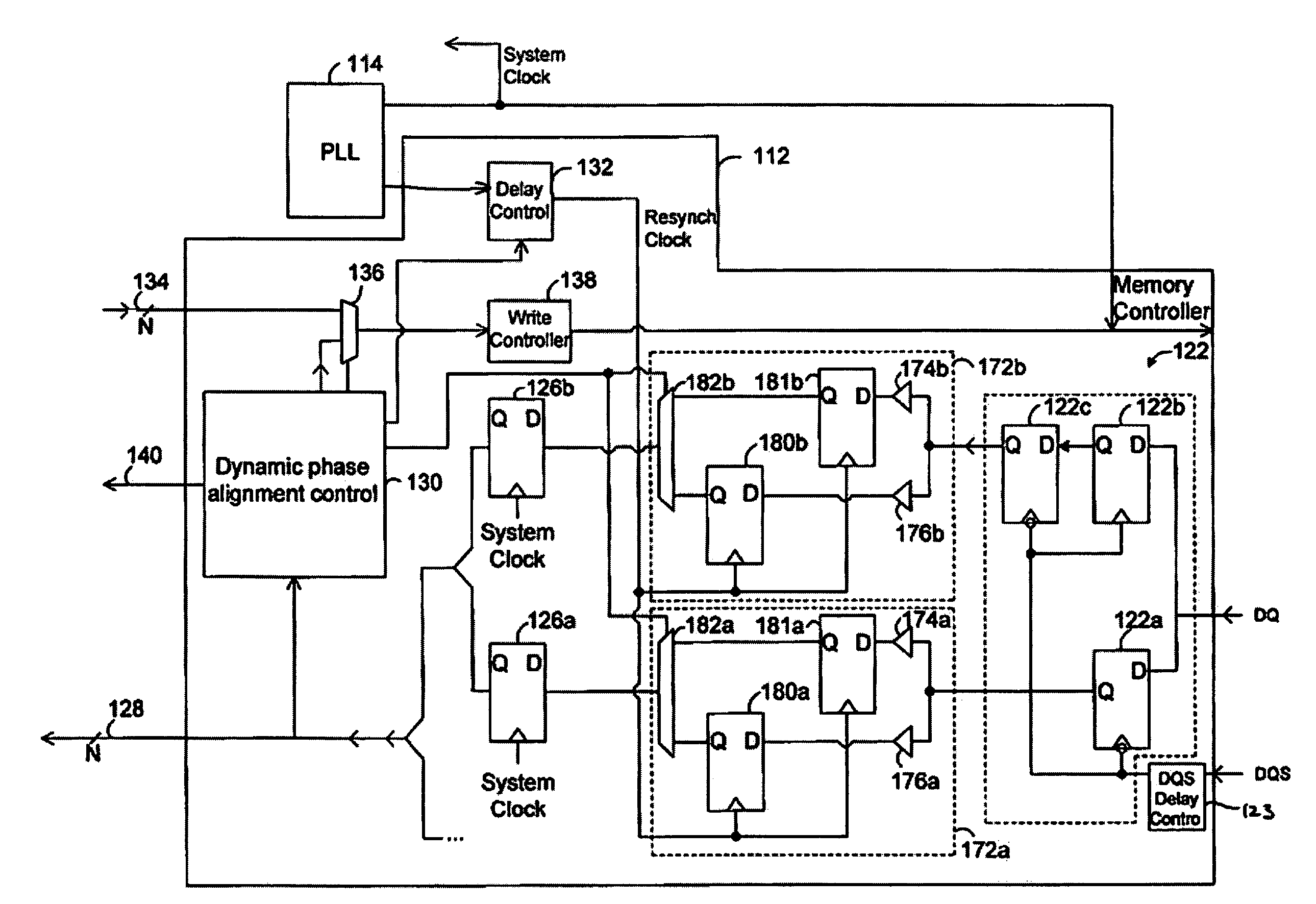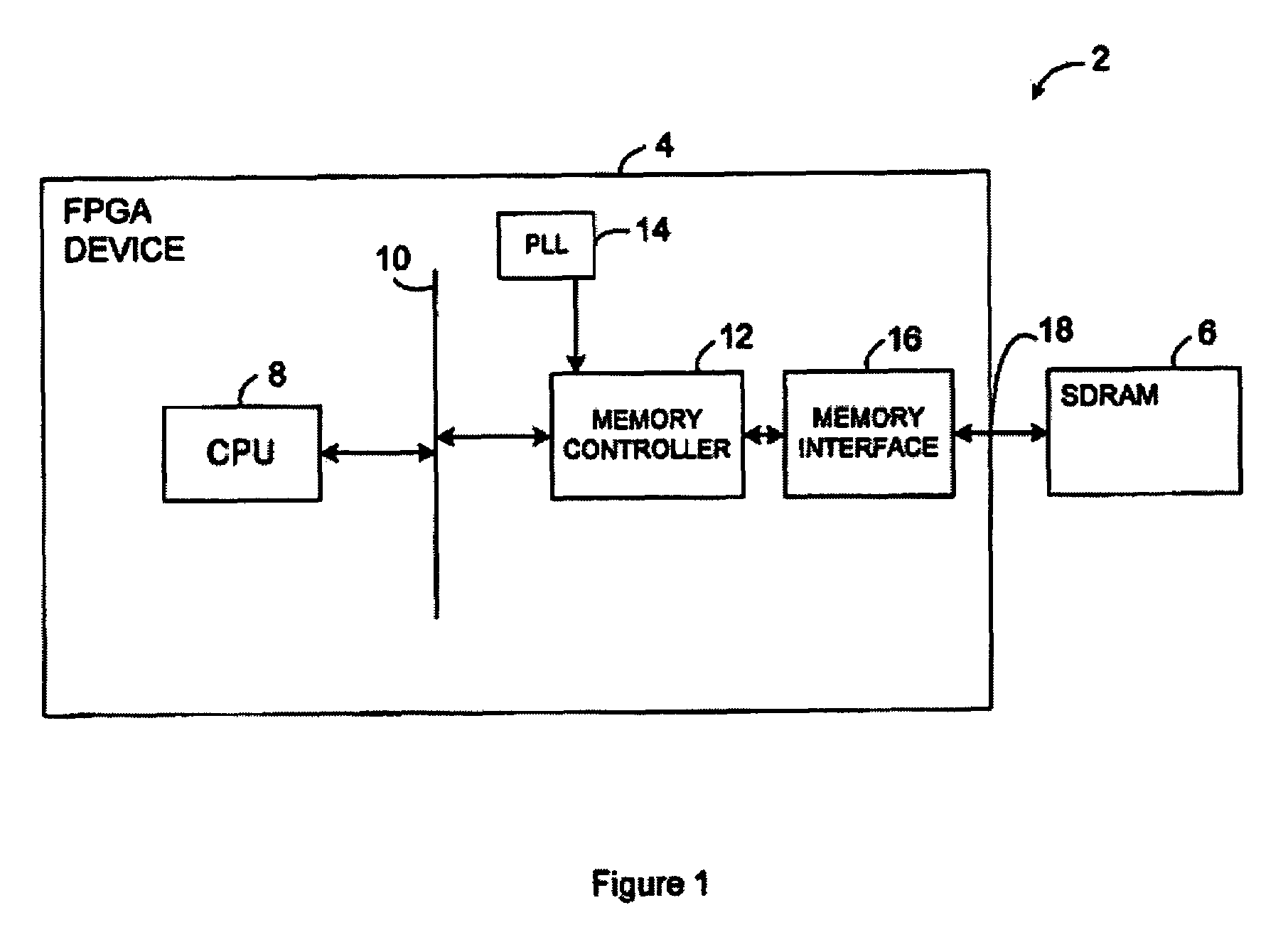Dynamic phase alignment for resynchronization of captured data
a technology of dynamic phase alignment and captured data, applied in the field of memory controllers, can solve the problems of resynchronizing captured data, variable delay, time delay can vary from one device to another, etc., and achieve the effect of optimal resynchronization
- Summary
- Abstract
- Description
- Claims
- Application Information
AI Technical Summary
Benefits of technology
Problems solved by technology
Method used
Image
Examples
first embodiment
[0026]FIG. 2 is a block schematic diagram of a memory controller, in accordance with the present invention.
[0027]As is generally conventional, the memory controller 12 includes a capture register block 22. More specifically, the memory controller 12 is connected to the external memory device 6 by way of a connector which may, for example, be 64 bits wide. In that case, where the external memory device is a DDR device, or a similar device as described above, there is a capture register block 22 for each pair of data bits, although FIG. 2 shows only one capture register block in detail for ease of illustration. Again, as is conventional, the capture register block 22 includes a first capture register 22a, a second capture register 22b, and a third capture register 22c.
[0028]The received data signal DQ is passed to the first and second capture registers 22a, 22b, and the output of the second capture register 22b is passed to a third capture register 22c. The second capture register 22...
second embodiment
[0054]Thus, FIG. 5 is a block schematic diagram of a memory controller 112, in accordance with the present invention. As is generally conventional, the memory controller 112 includes capture register blocks 122. More specifically, the memory controller 112 is connected to the external memory device 6 by way of a connector which may, for example, be 64 bits wide. In that case, where the external memory device is a DDR device, or a similar device as described above, there is a capture register block 122 for each pair of data bits, although FIG. 5 shows only one capture register block in detail for ease of illustration. Again, as is conventional, the capture register block 122 includes a first capture register 122a, a second capture register 122b, and a third capture register 122c.
[0055]Again, as is conventional, the received data signal DQ is passed to the first and second capture registers 122a, 122b, and the output of the second capture register 122b is passed to a third capture re...
PUM
 Login to View More
Login to View More Abstract
Description
Claims
Application Information
 Login to View More
Login to View More - R&D
- Intellectual Property
- Life Sciences
- Materials
- Tech Scout
- Unparalleled Data Quality
- Higher Quality Content
- 60% Fewer Hallucinations
Browse by: Latest US Patents, China's latest patents, Technical Efficacy Thesaurus, Application Domain, Technology Topic, Popular Technical Reports.
© 2025 PatSnap. All rights reserved.Legal|Privacy policy|Modern Slavery Act Transparency Statement|Sitemap|About US| Contact US: help@patsnap.com



